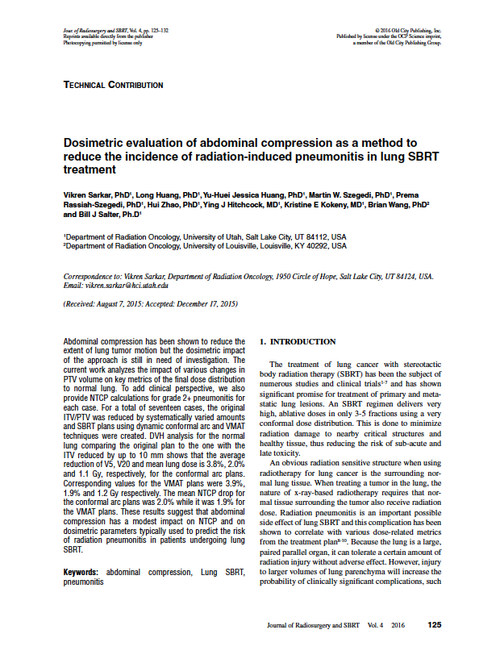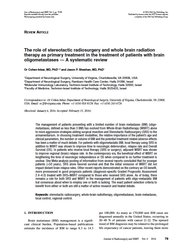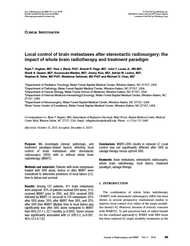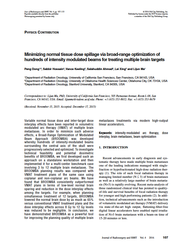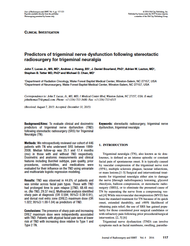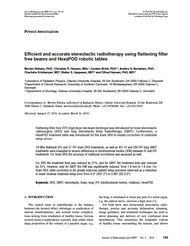- Home
- Journal Contents Downloads
- JRSBRT Downloads
- JRSBRT 4.2, p. 125-132
Product Description
Technical Contribution
Dosimetric evaluation of abdominal compression as a method to reduce the incidence of radiation-induced pneumonitis in lung SBRT treatment
Vikren Sarkar, Long Huang, Yu-Huei Jessica Huang, Martin W. Szegedi, Prema Rassiah-Szegedi, Hui Zhao, Ying J Hitchcock, Kristine E Kokeny, Brian Wang and Bill J Salter
Abdominal compression has been shown to reduce the extent of lung tumor motion but the dosimetric impact of the approach is still in need of investigation. The current work analyzes the impact of various changes in PTV volume on key metrics of the final dose distribution to normal lung. To add clinical perspective, we also provide NTCP calculations for grade 2+ pneumonitis for each case. For a total of seventeen cases, the original ITV/PTV was reduced by systematically varied amounts and SBRT plans using dynamic conformal arc and VMAT techniques were created. DVH analysis for the normal lung comparing the original plan to the one with the ITV reduced by up to 10 mm shows that the average reduction of V5, V20 and mean lung dose is 3.8%, 2.0% and 1.1 Gy, respectively, for the conformal arc plans. Corresponding values for the VMAT plans were 3.9%, 1.9% and 1.2 Gy respectively. The mean NTCP drop for the conformal arc plans was 2.0% while it was 1.9% for the VMAT plans. These results suggest that abdominal compression has a modest impact on NTCP and on dosimetric parameters typically used to predict the risk of radiation pneumonitis in patients undergoing lung SBRT.
Keywords: abdominal compression, Lung SBRT, pneumonitis
 Loading... Please wait...
Loading... Please wait...

